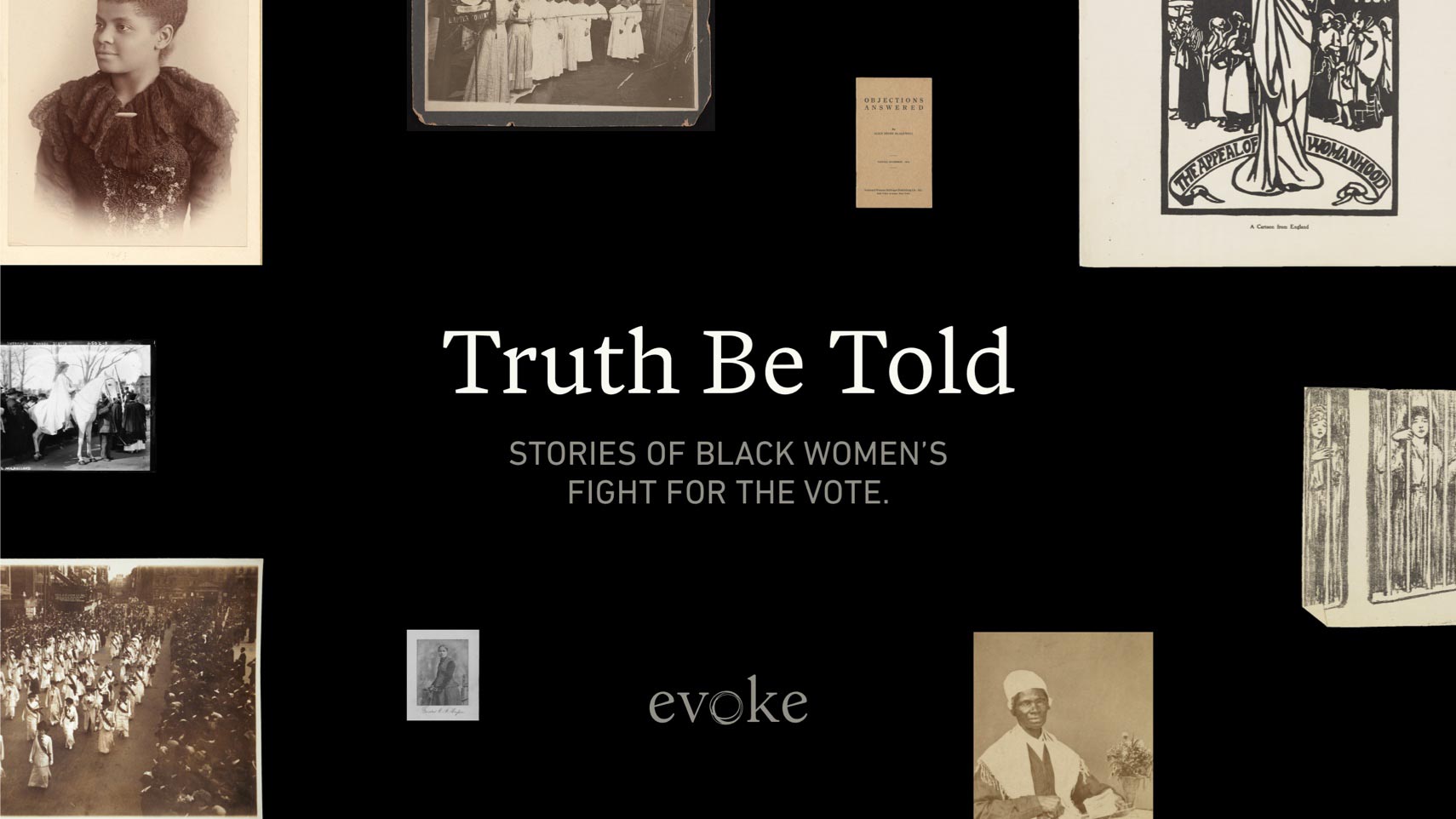
Photo courtesy of Pivotal Ventures
Truth Be Told is a multimedia exhibit that highlights Black women's role in the movement for women's voting rights and the systemic racism they encountered along the way, including from white suffragists. The goal of the exhibit is to raise awareness and inspire people to continue these women's unfinished work.
Truth Be Told Collection to Highlight the Role of Black Women in the Suffrage Movement
Pivotal Ventures today launched “Truth Be Told,” a digital collection of historical portraits and artifacts that aims to tell a more complete story about the movement to secure women’s right to vote in America. The collection comes as the country prepares to recognize the 100th anniversary of the 19th Amendment on August 26, a milestone in America’s ongoing journey toward gender equality.
The Truth Be Told collection shines a light on parts of the women’s suffrage story that tend to go untold, especially the leadership of Black women and the systemic racism they encountered along the way. Even after the 19th Amendment’s ratification, many women of color continued to be denied their right to vote.
“The 19th Amendment was an important but incomplete victory in the struggle for women’s voting rights,” said Melinda French Gates. “As we commemorate its centennial, we also have a responsibility to grapple with its complicated history and elevate the stories of courageous Black activists who challenged both sexism and racism in their long fight for the vote.”
“Artifacts such as the National Association of Colored Women banner and portraits of Black women including Sojourner Truth, Mary Church Terrell, and Shirley Chisholm, remind us that Black women have been significant figures in U.S. political history,” said Allison K. Lange, the curator of the collection. “As we commemorate the 19th Amendment centennial, this collection helps tell a more complex, complete, and true story of women’s voting rights activism.”
“The digitization of these collections focused on Black women represents an important opportunity for researchers, students, and the public to interact more intimately with the legacies of these inspiring women, and make vital connections to the present moment,” said Shaneé Yvette Murrain, the Community Manager of the Digital Public Library of America.
Our society’s historical narratives systematically omit women, especially women of color. Less than 3% of the words in history textbooks are specifically about women and only 5% of all images of historic figures are women of color. What we learn about the past shapes how we see ourselves today, which is why, as part of our broader mission to expand women’s power and influence, Pivotal Ventures is supporting efforts to tell a more inclusive story about women’s contributions to history.
The collection features portraits and artifacts from partners including the Digital Public Library of America, the New York Historical Society, the Arthur & Elizabeth Schlesinger Library, the Schomburg Center, the Library of Congress, and Gates Archive and Collections.
List of Key Artifacts from the Collection:
- Sojourner Truth portrait (Chapter 1: Leading the Way)
- Truth, an advocate for ending slavery and women’s rights, sold her portrait to challenge popular racist cartoons that mocked Black people.
- Nannie Burroughs and her banner (Chapter 3: Activists Protest)
- In the photo, Burroughs holds a banner for the Women’s Convention, which she founded as part of the National Baptist Convention.
- Ida B. Wells-Barnett (Chapter 3: Activists Protest)
- In a portrait from the 1890s, Wells-Barnett, a journalist and activist, looks into the distance. This pose was common among leaders and suggested that she was thinking of future plans.
- Mary Church Terrell (Chapter 3: Activists Protest)
- Terrell was a lifelong activist on issues from anti-lynching to suffrage to civil rights. She dressed strategically in her portraits to challenge caricatures that mocked educated women as “bad-looking.”
- Shirley Chisholm (Chapter 4: The Ongoing Fight)
- Even after the 19th amendment’s passage, women—especially women of color—had to fight to have a seat at the table in government. Chisholm’s poster features her 1972 campaign slogan, “Unbought and Unbossed.”
Sign up to receive the latest news about our work.























